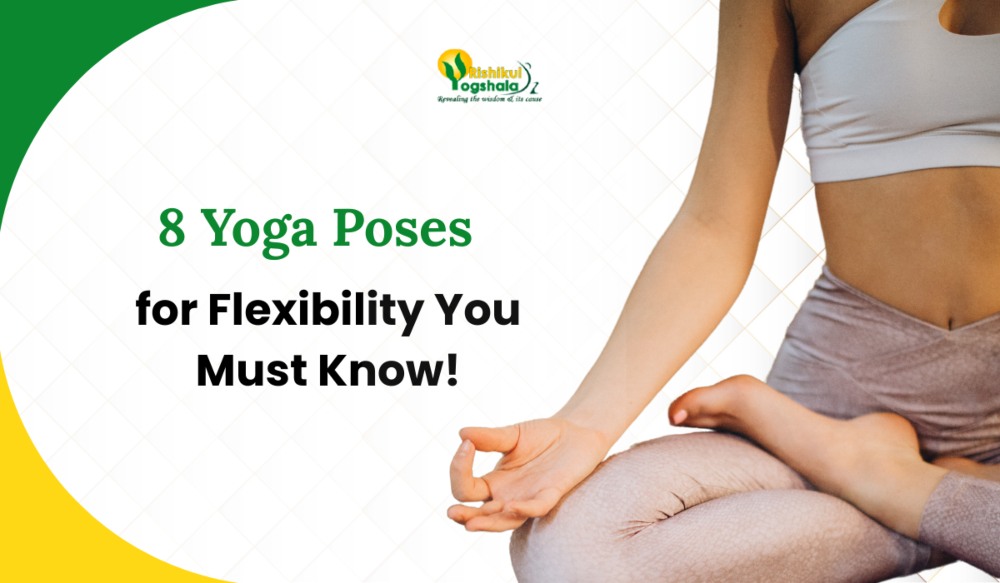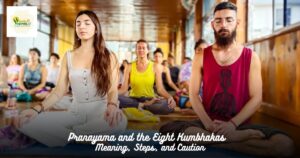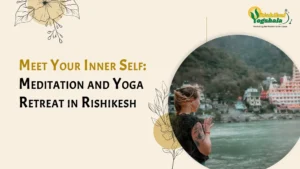Yoga for Flexibility
It’s always important to be flexible to feel good in your body, and also for physical well-being. Thus, one should always try to work on their body and make it flexible. One of the vital ways of making one’s body flexible is via Yoga! There are many flexibility poses that one can practice.
The body, because of old age or bad posture, may lose flexibility over time. So, regular yoga practice may be a great way to improve flexibility. Flexibility yoga poses are good for the body and enhance flexibility.
Why Is it Important to be Flexible?
- Greater Motion Range: By practicing yoga and the poses to enhance flexibility, it becomes easier to move your joints in the normal direction
- Reduced Muscle Strain: When one stretches their muscles, tightness can be relieved, making it easier to move.
- Improved posture: Poor posture happens when the body is not flexible
- Less pain: By being more flexible, one witnesses less pain in their shoulders, back, and neck.
- Less stress: One will feel more relaxed when their muscles let go of tension.

How Can One Become Flexible With Yoga: Yoga Poses for Flexibility and Strength
- Start with consistent practice
- Focus on breath
- Use a variety of poses for flexibility
- Deepen Your stretches
- Focus on alignment
- Stretch with awareness
8 Yoga Poses That Help With Flexibility
The best yoga poses for increasing flexibility are Vinyasa, Hatha, or Yin. The following poses can be especially helpful for increasing flexibility and stretching many of your major muscles if you are short on time or prefer to practice some yoga poses at home.
Proceed at your own pace through each pose. Instead of focusing on how it looks, think about how it feels. As long as each pose doesn’t hurt or make it hard to do correctly, you can do it as many times as you want.
2 Poses of Yoga for Flexibility in Your Back
Here are 2 poses of yoga that can enhance flexibility in your back, helping to relieve tension and improve overall mobility.
1. Intense Side Stretch (Parsvottanasana)
This is a forward bend stretch that stretches one’s spine, hips, and legs. It also helps in one’s posture and digestion! This pose is good as it’s yoga for flexibility and strength.
How to do Parsvottanasana:
- This is an easy pose, where one has to stand with their left foot in front facing forward and right foot back.
- Then one needs to square both of their hips to face forward.
- Place your hands on the hips and bend at your hips to fold your torso forward,
- Tuck your chin into your chest.
Common Mistakes to Avoid:
- Don’t collapse the lower back as this can lead to strain.
- Don’t overextend the neck. In this very pose avoid craning your neck too much.
- Make sure you breathe deeply. The movement should always go along with the breath.
- Engage your abdominal muscles to support the spine, especially when rounding the back.

2. Head to Knee (Janu Sirsasana)
This pose helps to improve flexibility in one’s back, hips, and thighs. It also increases blood flow in the lower abdomen and can be great for relieving stress.
How to do Janu Sirsasana:
- Sit on your yoga mat
- Then extend your right leg and press the left foot into the inside of your thigh.
- Raise your arms overhead.
- Then bend at your hips and carefully place your hands on the floor.
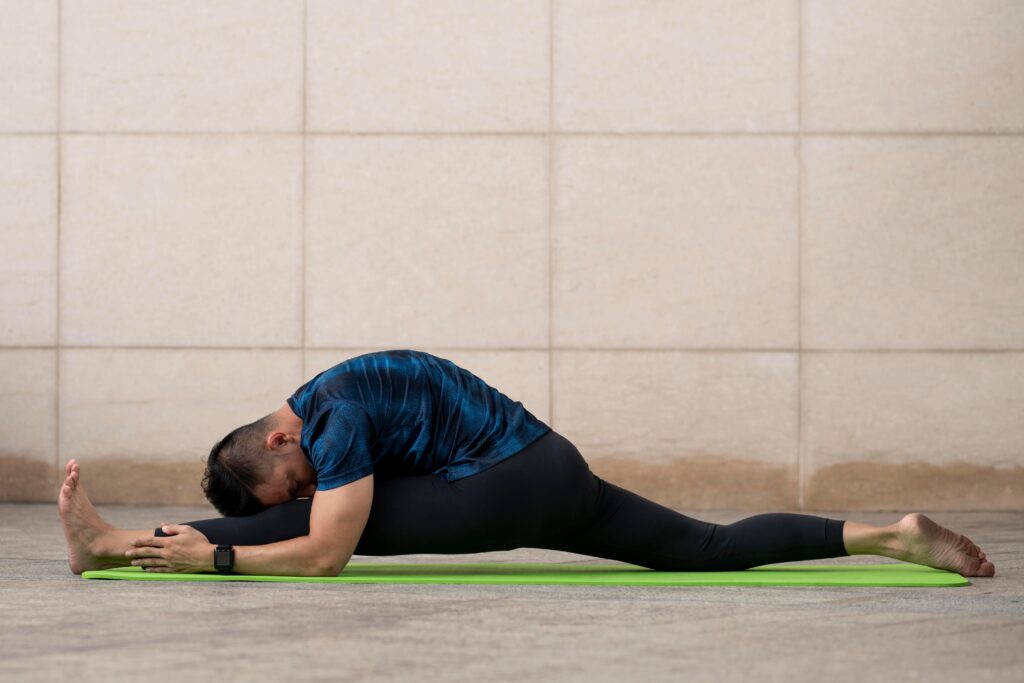
Common Mistakes to Avoid
- Don’t round your back. Many students and teachers focus on getting their head to the knee, this can lead to rounding the back rather than maintaining a long spine.
- Try not to fold too deeply or quickly, especially if one is not warmed up or flexible enough.
- Don’t collapse the chest. Dropping the chest down toward the knee without maintaining proper posture can reduce the effect of the stretch.
- Locking the knee of the extended leg can put a lot of unnecessary strain on the joint.
2 Poses in Yoga for Flexibility in Your Core
Here are 2 poses in yoga that promote flexibility in your core, aiding in balance and strengthening your abdominal muscles.
3. Cat-Cow (Bitilasana Marjaryasana)
This pose works well for improving mobility and flexibility in the neck, shoulders, and spine.
How To Do Bitilasana Marjaryasana:
- Start this by putting the wrists beneath the shoulders and knees beneath your hips.
- Inhale as you allow your belly to fall forward to the floor.
- Then slowly exhale as you press into your hands to round the spine up towards the ceiling.

Common Mistakes to Avoid:
- Don’t over-extend the lower back during the cow pose, or even over – rounding the upper back
- It’s best to not let the belly drop completely or allow the core to slacken during the pose.
- One should not look up too far in the cow pose or let the head dangle in the cat-cow pose.
- One should not hold the breath or rush through the movement.
4. Bow Pose (Dhanurasana)
This intermediate level helps stretch many of the muscles used when sitting. It might be able to help you become more flexible in your legs, back, chest, glutes, and core muscles. If you are experiencing discomfort in your back, neck, or shoulders, you should not perform this pose.
How To do Dhanurasana:
- First, lie on your stomach with your arms alongside your body.
- Bend your knees reach back with your hands and hold the outside of your ankles.
- Keep your head looking forward while taking deep breaths.

Common Mistakes to Avoid:
- One should not push the lower back into a deep arch, as it can cause compression in the lumbar spine.
- Don’t let the knees open outwards, as this can strain the hip joints and the lower back
- Try not to put too much force on the ankles, as this can strain the knees, ankles, and even the lower back.
- Don’t let the chest collapse or round forward instead of lifting it up. This can strain the neck and spine.
Also Read: Bow Pose (Dhanurasana): Steps and Benefits of The Bowing Pose
2 Poses in Yoga for Flexibility in Your Hips
Here are 2 poses in yoga that enhance flexibility in your hips, helping to release tension and improve your overall range of motion.
5. Low lunge (Anjaneyasana)
How to do Anjaneyasana:
- Bend your right knee and then one should lengthen through your spine, and lift up your torso and arms.
- One can also extend their arms to the side.
- Then gently push into your right hip.
Common Mistakes to Avoid:
- Don’t allow the front knee to collapse inward or extend past the toes.
- One should not let their hips drop too much, as this can create strain in the lower back and hips
- It’s best to not arch the lower back excessively to deepen the stretch as it can strain the lumbar spine.
- Don’t let the core slacken or disengage. This will lead to instability in the pose and also have lower back strain.
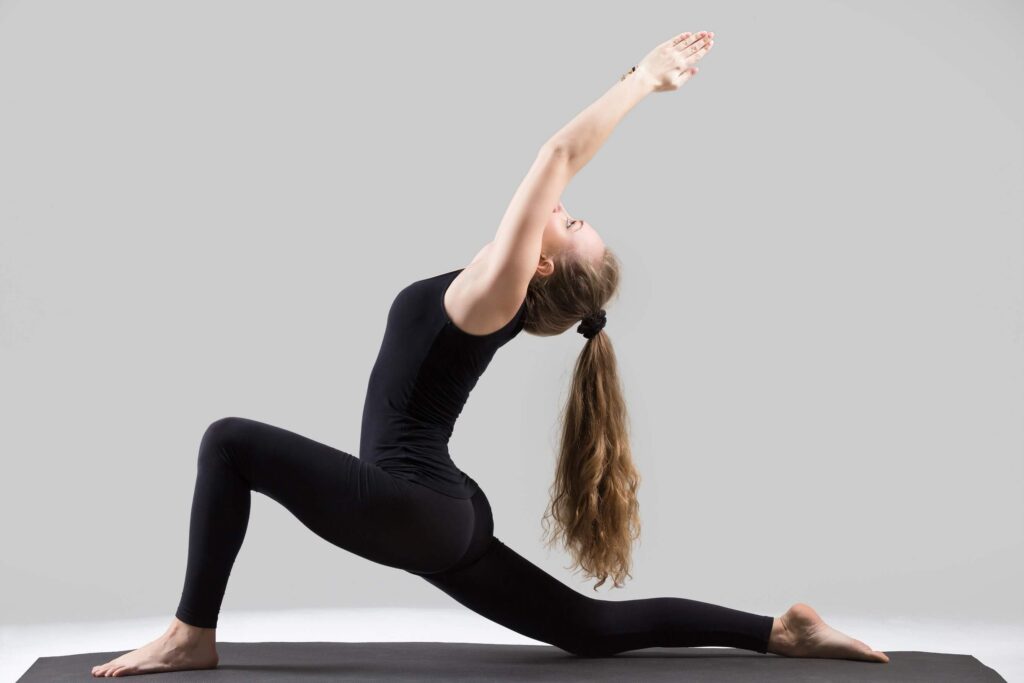
6. Wide-Angle Seated Forward Bend (Upavistha Konasana)
This is a forward bend that can help open up your hips and lower back while also boosting flexibility in your hamstrings and calves.
How to do Upavistha Konasana:
- Sit on the floor
- Then extend your arms overhead.
- Fold forward your hips and walk with your hands forward to your feet.

Common Mistakes to Avoid:
- Don’t round the back or collapse the spine as you fold forward as it could lead to strain in the lower back
- Allowing the knees to bend while trying to touch the floor or deepen the stretch.
- Try not to force the torso toward the floor, as this may overstretch the hamstrings and cause discomfort.
- Don’t let the inner thighs collapse inward, as this can reduce the stretch and put strain on the pelvis.
2 Poses in Yoga for Flexibility in Your Shoulders & Neck
Here are 2 poses in yoga that increase flexibility in your shoulders and neck, relieving tension and promoting better posture.
7. Cow Face Pose (Gomukhasana)
How to do Gomukhasana :
- Sit in a seated position.
- Lengthen your spine
- Extend your left arm overhead.
- Then gently draw your left elbow over to the right, allowing the left hand to move further down your spine.

Common Mistakes to Avoid:
- Make sure to not let the knees stack directly on top of each other without proper alignment.
- Don’t overarch the lower back to sit upright, as this can strain the lumbar spine and create tension in the pelvis.
- Make sure to not let the hips shift to one side, or let the sitting bones lift off the floor.
- Don’t strain the shoulders by forcing the arms into the bind or trying to reach the hands together behind the back
Also Read- Mastering Gomukhasana With Step-by-Step Guidance and Benefits
8. Plow Pose (Halasana)
This pose may help remove tension in the neck, shoulders, and spine. Avoid doing this pose if you have any concerns with the neck, digestion, or even blood pressure.
How to do Halasana:
- Lie on your back and raise your legs to a 90-degree angle
- Then bring your legs over your head.
- After that place your hands on the lower back

Common Mistakes to Avoid:
- It’s suggested to not put too much pressure on the neck by turning the head or letting the neck collapse
- Don’t strain to get the feet to touch the floor.
- Don’t allow the spine to round excessively as one tries to deepen the stretch. This can cause injury to the back
- One should support the weight properly.
Also Read: The Ultimate Plow Pose Guide: Everything You Need to Know About Halasana
Things to Remember While Performing Yoga for Flexibility
When performing a yoga pose, avoid overdoing it or forcing yourself into any position. This could make you more likely to get hurt. Follow your body’s cues. Release a pose immediately if it becomes too painful or uncomfortable.
It’s alright if you can only hold a pose for 10 or 20 seconds at first. You can work on holding the poses for longer as you get more flexible. Also, before beginning yoga stretches for flexibility, you should consult your doctor or a certified yoga instructor if you are
- Having High or Low Blood Pressure
- Having any Kind of Pain or Injury, Including Sciatica
- Having Menstruation
- Having Digestive Issues
- Having Asthma
- Being Pregnant
- Having Cardiovascular or Respiratory Issues
- Taking any Medications
Become Flexible With Yoga
So, Being flexible is very important, and above are some 8 yoga poses that one can do to enhance their flexibility. If you’re wondering if they actually work – then YES! They definitely do. So, if you’re someone looking to make your body more flexible just follow the blog and come across a transformative journey when it comes to your body.
Incorporating this pose into your practice can lead to significant improvements in overall well-being. For those interested in deepening their yoga journey, consider enrolling in a yoga teacher training program. Rishikul Yogshala, a leading Yoga school in Rishikesh, offers comprehensive courses like 200 Hour Yoga Teacher Training Rishikesh, 300 Hour Yoga TTC in Rishikesh, 500 Hour Yoga Teacher Training in Rishikesh.
Come be a part of this transformative journey and see the change! What are you waiting for? It’s time to increase your flexibility with yoga and feel better mentally and physically. Thus, practice yoga every day and witness the change that you feel in your body. Time to be a part of this change! Follow the above easy flexibility poses and become flexible

